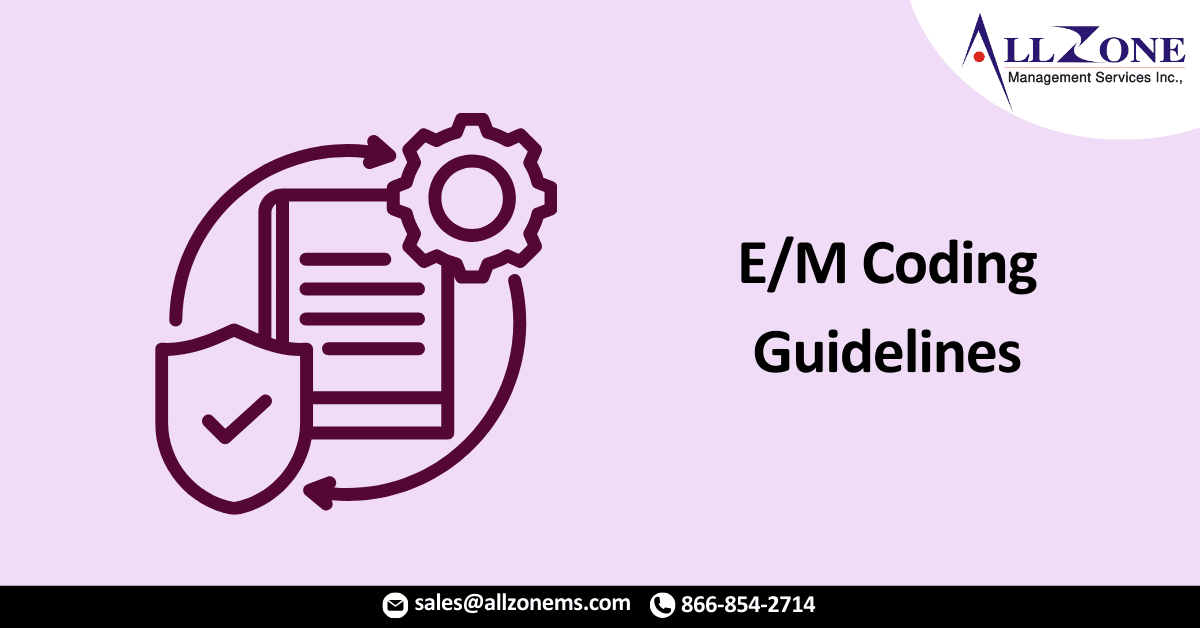Industry experts explain the intricacies of the 2021 E/M coding guidelines.
During the Evaluation and Management (E/M) Panel general session, an expert panel made up of a physician, coder, auditor, payer, and a representative from the American Medical Association (AMA) answered audience questions regarding the 2021 E/M coding guidelines for office/outpatient visits.
The panelists were AAPC’s Chief Product Officer Raemarie Jimenez, CPC, CDEO, CIC, CPB, CPMA, CPPM, CPC-I, CANPC, CRHC, Jaci Kipreos, COC, CPC, CDEO, CPMA, CRC, CPC-I, CEMC, Samuel Le Chase, MD, MPH, CPC, CRC, CPC-I, and CPT® Assistant Managing Editor Leslie Prellwitz, with 2022-2025 National Advisory Board President Colleen Gianatasio, CPC, CPCO, CPC-P, CPMA, CRC, CPC-I, moderating.
Here are five Q&As that came out of that session.
Q: For documentation purposes, for time-based 2021 E/M coding guidelines, is it correct if the provider documents time as, “I spent approximately 30 minutes …?”
RJ: It depends on whether the provider documents this for every patient. If they spend “approximately 30 minutes” on every patient, an auditor is going to question that. We know that they’re not going to count every single minute, but we want them to get as close as possible.
JK: From an auditor’s perspective, it’s not so much about the time statement as it is the lack of information on how they spent that time.
Q: What are some examples of what time-based statements should look like?
JK: It should indicate how the provider’s time was spent — a history and an exam, for example — anything that counts toward time. As an auditor, I would like to know what the provider performed in that time. If separately reportable items were reported, I like a statement that says they were not included in the time.
Q: I would like thoughts on the audit risk for billing by time too often. Should time be used cautiously?
JK: In the audits I’ve been doing, very few providers are using time; I see it primarily with the 99215. I don’t call it a risk anymore; if it’s the more appropriate way to bill then I don’t see a problem with it.
SC: If you spend 60 minutes with every child who has an upper respiratory infection, you’re probably going to have some people looking at you. But if you’re in an area where there’s a lot of high-risk children and every parent is worried about their child’s cancer diagnosis, if you truly spend an hour with a parent counseling them, then you need to say so and claim it. Don’t feel bad to bill them more because it was just a cold; it wasn’t just a cold when the parent was worried to death.
Q: Please give feedback on provider referrals given with regards to the E/M coding level. The AMA chart doesn’t give this criterion under data or risk. Does it not count toward MDM?
RJ: In the guidelines, in the definitions, it states “the referral without evaluation,” meaning that the provider didn’t do a history, exam or any diagnostic workup. That’s not really going to count toward the MDM level; it depends on what essence you are referring a patient out.
LP: When we’re taking a look at the number and complexity of problems addressed at the encounter, one of the changes is that it’s not just that there’s a problem but the problem is actually addressed. So, the question will be, was there an actual addressing of this issue? We’ve seen some questions where the physician is speaking with a patient about a particular condition and they talk “off the record” about another condition, but there’s really no evaluation, there’s no assessment of that. And the question is, what is the work that the physician is doing there if they’re not really addressing the problem. I think that would be key in a situation like this.
JK: The question I get a lot is “but what if you’re referring because you think the patient is going to need a procedure that you don’t do, and you’re going to discuss that whole procedure with the patient and tell them that you’re going to refer them to this other provider. Are you going to give that provider any risk points for going through the procedure with the patient, even though they aren’t going to perform it? That’s where I get hung up. Often, it’s open to the documentation.
SC: Sometimes I’m not making the referrals until we’ve discussed risk of some of these procedures. If you’re not considering things at all then perhaps you’re not bringing it to that level of risk, but I think certainly there are times that I have used that level of risk if I’m sending someone elsewhere knowing that a procedure is going to be done. Usually, though, the risk level is already taken care of without the referral. I think providers get hung up on some of the other details when the level has already been met by other criteria.
RJ: I think the consensus of the group here is that we wouldn’t count it as data. It might indicate the level of risk for the patient that might require additional treatment, but as far as counting it as a data point, it would not be given credit there.
Q: There are many payers that are not accepting E/M consult codes as of 2020-2021. Will consult codes be fading out completely at some point?
RJ: I don’t think so, just from observing discussions on this before. There are payers that still see value in those codes, and there are still providers who say those codes resonate with what they’re performing. So, I don’t see any indication of them going away.
LP: From the perspective of the changes that were approved at the February 2021 CPT® Editorial Panel meeting, there is a new revision in the consultation section, including headlines and guidelines. Given that, unless there’s a large sea of change, consultations will still be around for 2023.
For More Information: https://www.aapc.com/blog/86151-5-faqs-about-e-m-coding/

